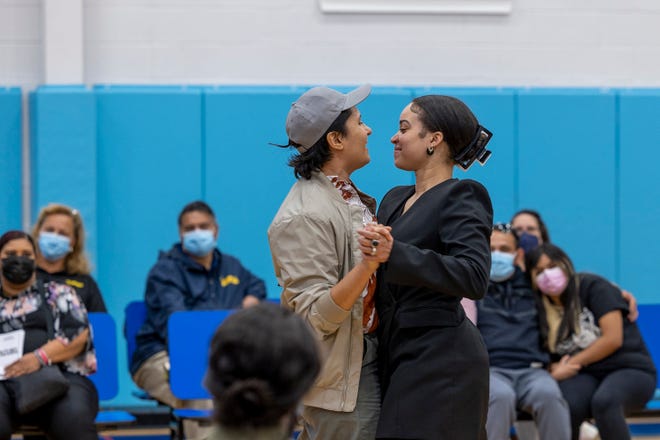As the pandemic generated upheaval for all people and sectors, arts organizations moved into a period of intense transition.
Generally reliant on in-person engagement, arts organizations found themselves struggling to connect with their audiences and facing debilitating losses in earned revenue. And yet arts leaders’ belief in the importance and power of art, creativity and expression — even and perhaps especially during periods of fear and crisis — did not waver.
To continue engaging audiences and sustain hard-built infrastructure, many organizations entered a period of experimentation and discovery. In Delaware — as elsewhere — organizations moved content online, moved experiences outdoors, and redesigned their spaces to permit social distancing. They developed and implemented rigorous protocols to support the safety of their staff and communities.
Organizations rooted in communities experiencing the greatest consequences of the pandemic sought to provide support in whatever ways they could, through varying forms of care, connection and resources. Despite the crisis, all of these organizations demonstrated extraordinary resilience, commitment and creativity buoyed by programs like the Paycheck Protection Program and flexible support from funders.
At the same time, the murder of George Floyd in May 2020 gave momentum to a reckoning already begun in the arts and culture sector.
More:No Firefly, No Cry: Plenty of Delaware entertainment to love in 2023
The sector has a long history of racism, including the colonial origins of collecting institutions, the privileging of Western European and white American cultural practices and objects, and the exclusion of people of color from opportunities granted to white artists and culture-makers.
Organizations rooted in and focused on BIPOC communities have found ways to thrive despite substantive struggles to secure the levels of support available to white-dominant institutions. Patron-centric models reliant on wealthy, predominantly white governing boards make it difficult for organizations to change the status quo even as they grow more conscious of the harm it perpetuates for BIPOC staff, audiences and communities.

Within this context, the Delaware Division of the Arts (DDOA) collaborated with the Delaware Arts Alliance to conduct an informal needs assessment, meeting with leaders at many of Delaware’s arts and culture organizations to learn from them what the sector needs to intentionally evolve after two years of experimentation, learning and soul searching.
From these conversations, a theory of change began to emerge: that the future vitality, relevance, and impact of Delaware’s arts and culture sector depends on its ability to offer value and resonance for all members of its community. Connected to this, each organization needs a business and governance model aligned to the specific forms of value it is poised to provide.

We believe that this requires the following six commitments from organizations:
- Actively apply principles and practices of inclusion, diversity, equity and access (IDEA)
- Understand and meet the needs of current and prospective audiences
- Prioritize building and stewarding relationships
- Embrace innovation and experimentation
- Contribute actively and strategically to building strong and equitable communities
- Articulate their impact and value
The DDOA’s conversations with Delaware organizations surfaced that they are yearning for space, community and support to imagine and operationalize their futures. In response, the State of Delaware committed $3M in seed funding to the Delaware Arts Equity and Innovation Incubator. The Arts Incubator is an eight-month program that guides cohorts of organizations through discovery and planning, helping them focus and prioritize their change efforts. This process prepares them to pilot new programs or practices with financial support from the Division.
More:Thank you for a great year of Open Call. Here’s why you should join us in 2023
The first cohort of five organizations completed the eight-month program in spring 2022 and provided overwhelmingly positive feedback on the experience.
At the conclusion of the program, we issued an anonymous survey to the 22 board, staff, artists and community representatives who participated most heavily in the program’s offerings. Of the 21 people who completed the survey, 86% indicated that the program had prepared them to advance IDEA within their organizations, with the other 14% noting that they didn’t need this type of support but derived other value from the experience.

A second cohort of four organizations is currently in process.
This is long-term work that requires dedicated, collaborative action by arts organizations, private funders and the state. Over time, we will measure our success by assessing the following metrics:
- The state of Delaware’s 1 million inhabitants feel connected to and represented by the state’s arts and culture organizations.
- Arts organizations demonstrate increasingly diverse audiences, artists, staff, and board.
- BIPOC-led and BIPOC-serving organizations receive increased support.
- Organizations have the business models they need to deliver effectively on their missions and values.
- The State of Delaware has expanded its ability to support arts organizations by:
- Addressing state-level structural issues that impede organizations’ ability to advance IDEA.
- Knitting connections between arts organizations and public agencies to advance shared goals.
- Scalability is achieved through the transfer of learnings and practices to other departments in the state of Delaware and to arts agencies across the U.S.
Jessica Ball is director of Delaware Division of the Arts.